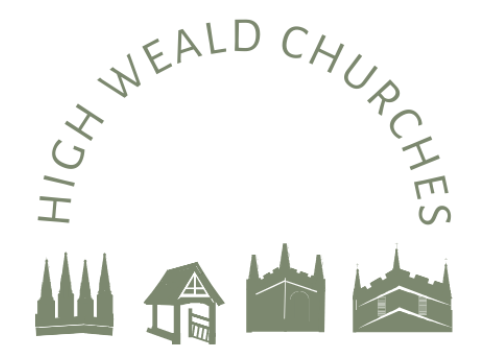St Luke’s,
Chiddingstone Causeway
Getting Here
Tonbridge Road
Chiddingstone Causeway
Tonbridge
TN11 8JE
St Luke's is located on the B2027, next to Penshurst station and just before you reach the village of Chiddingstone Causeway itself. It is almost opposite The Little Brown Jug pub.
St Luke's has its own car park next to the church.
St Luke's Parish Room
The Parish room is a purpose-built free-standing oak building available for hire for activities and events. The building is of 640 sq ft and is suitable for events of up to 40 people.
Situated next to St Luke's Church, there is ample parking, and kitchen and toilet facilities are available.
For booking information, please contact Diane Heasman on 01892 870794
Please click here to view the Parish Room calendar.
Services
1st, 3rd and 4th Sundays of the month
10am Sung Holy Communion
2nd Sunday of the Month
10am Sung Matins (traditional)
-
St Luke’s, Chiddingstone Causeway – an industrial relict in a rural benefice.
Chiddingstone Causeway has its roots in the Victorian social and industrial revolution. Its name connects it both to the village of Chiddingstone, next door, and to Sevenoaks, the likely destination of the Causeway over the boggy ground between here and that town.
But it was the innovative travel of the railways that really caused this village to coalesce. Penshurst station was established to serve the stately home, Penshurst Place, but it rapidly became a vehicle to transport the locally designed cricket ball around the country, so that it became the national — and international — standard. On the back of the railway, then, was built a significant industry — with the requisite workforce — of cricket ball manufacturing by Dukeand Sons that turned a little hamlet into a small village, and the small village into a parish of its own, formed out of the parishes of St Mary's, Chiddingstone, St John's, Penshurst, and St Mary's, Leigh.
So it is fitting, then, that the Church of St Luke's was built to commemorate the most successful Victorian industrialist that you've never heard of. Frank Hills was a phenomenally successful businessman who lived in the Redleaf estate that still defines much of the area. The core of his business was the chemical plant in Greenwich, but he had fingers in most pies available to him, including a great love of the new ironclad shipping industry.
St Luke's was built in 1897–1898 to a design by John Francis Bentley of Westminster Roman Catholic Cathedral fame. It is the only Protestant church designed by Bentley, which might explain its unusual design. For a Victorian church it has a singularly prominent pulpit and strangely Georgian feel to what is described as a loosely Decorated Gothic Revival style. The east window, too, has a claim to fame of being the work of Wilfrid de Glehn. The willingness of these two artistic giants to take part in the design of such an out of the way church maybe to do with the connection between the Hills family and the Wells family, which goes back several generations. The William Wells* who built Redleaf and whose family continued to live across the road, was a significant art collector, had considerable connections in the artistic world. While William predeceased Frank by a measure of several decades, he would not have been forgotten in a hurry, being as he was a significant contributer to village life. It is indicative of a community that was still growing that the church designed by Bentley was probably never quite finished: elements of the design seems to have anticipated a reredos, a rood screen, and a clock and a peal of bells for the tower. This arguably makes St Luke's a metaphor for the community that shelters within — never quite complete.
St Luke's replaced St Saviour's — the original tin tabernacle built for the fledgling village in c. 1873. Just as that building had a second career as a village hall, so St Luke's now has a rather fine church room in the churchyard, which hosts a variety of groups and events. (To book contact Diane Heasmanon 01892 870794.)
—
*The National Trust has lead the way in addressing and acknowedging our histories of colonialism and historic slavery, and the brothers John and William Wells were both connected to the slave trade by association. William by his connection with the East India Company, John through his banking company, both of which relied heavily on slave labour. While John Wells did also argue for its abolition, he also claimed compensation when the trade was abolished. The presence of slavery money was ubiquitous in Victorian England, even in such a small village, and it is chastening that much of the art and philanthropy of the era is compromised with the darker side of the Industrial Revolution and Empire, which affects British life into the present.
-
We welcome visitors at all times –the church is normally open during daylight hours, every day of the year.
School visits
We especially encourage school visits. If you would like to discuss a visit, please email our administrator at office@highwealdchurches.org.uk -
Unfortunately there are several steps at St Lukes, but for access for services please contact us and we will put out the ramp. St Luke’s room, on the other hand, is fully accessible to wheelchairs and pushchairs. There is also a (single, unisex) wheelchair accessible toilet with baby-changing facilities in this newer building.
In the church, there is an audio loop for the hard of hearing and we are in the process of improving our microphones and amplification.






